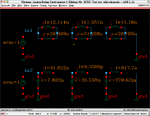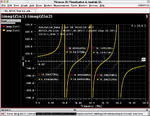niki
Member level 4
- Joined
- Feb 20, 2002
- Messages
- 70
- Helped
- 20
- Reputation
- 40
- Reaction score
- 20
- Trophy points
- 1,288
- Location
- Switzerland
- Activity points
- 418
I placed a little LC-network example of synthesizing Driving-Point impedances with defined poles and zeros.
Two canonical realizations are shown. One of the networks have very exotic element values!!
Read the attachement and enjoy.
Two canonical realizations are shown. One of the networks have very exotic element values!!
Read the attachement and enjoy.


